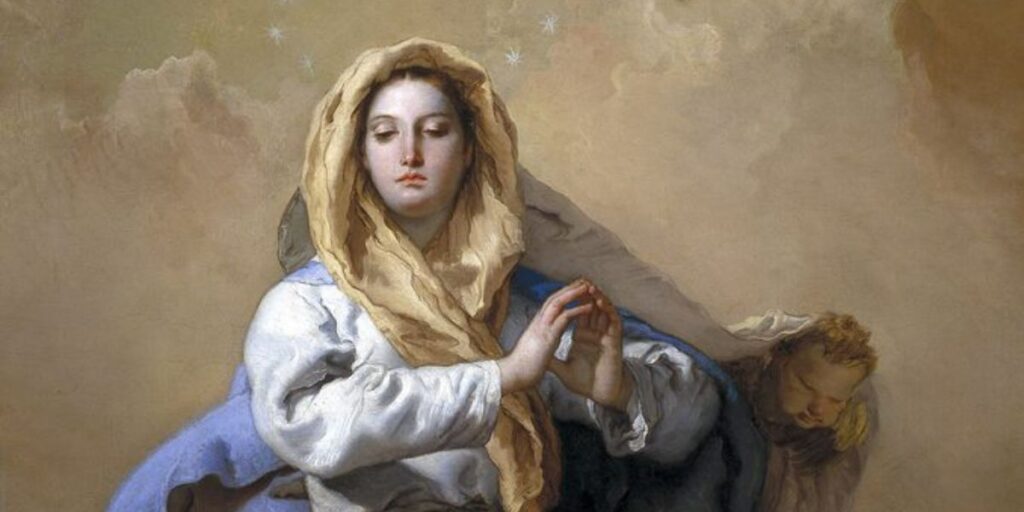Introduction
In the rich embroidery of strict convictions, the Flawless Origination of Mary remains as a religious foundation, a regulation that has enthralled the personalities and hearts of devotees for quite a long time. As we dig into this hallowed idea, we venture through the understandings of holy people who have wrestled with the secrets encompassing Mary’s origination, analysing their points of view on her pure nature, divine blessing, and the significant ramifications for the unwavering.
Understanding the Immaculate Conception
The idea of the Faultless Origination fixates on the conviction that Mary, the mother of Jesus, was imagined without the stain of unique sin. This remarkable honour given to Mary separates her as a vessel of unmatched immaculateness, picked by divine provision to bear the Child of God. Saints such as Augustine of Hippo and Thomas Aquinas grappled with the theological intricacies, offering insights into the nature of Mary’s sinlessness and the implications for humanity.
Theological Foundations in Scripture
To comprehend the Immaculate Conception, one must turn to the sacred scriptures, where seeds of this doctrine find root. Saints like Jerome and Ambrose meticulously combed through biblical texts, drawing connections between Mary and the woman of Genesis 3:15, the prophesied “woman” destined to crush the serpent’s head. Their exegetical endeavours laid the groundwork for the theological edifice that would later crystallise in the dogma of the Immaculate Conception.
Mary in the Eyes of Mystics and Visionaries
Beyond theological discourse, mystics and visionaries have played a crucial role in shaping popular devotion to Mary’s Immaculate Conception. The likes of Catherine Labouré, to whom the Miraculous Medal revelations are attributed, and Bernadette Soubirous, who witnessed the Marian apparition at Lourdes, provide profound glimpses into the heavenly affirmation of Mary’s sinlessness. Their encounters offer a bridge between theological speculation and the lived experience of Mary’s transcendent purity.
Controversies and Ecumenical Perspectives
While the Impeccable Origination is a focal precept in Roman Catholic religious philosophy, it has been a disputed matter among various Christian customs. Investigate the discussions that unfurled during the Reconstruction and Counter-Reorganization periods, as holy people like Martin Luther and John Calvin introduced differentiating sees. Additionally, consider the evolving ecumenical dialogue in modern times, where efforts to find common ground on Mary’s role in salvation continue to shape interdenominational relationships.
Contemplating Mary’s Role in Salvation History
The Immaculate Conception not only emphasises Mary’s purity but also underscores her integral role in the salvation narrative. Saints like Maximilian Kolbe and Louis de Montfort expound on Mary’s cooperation with divine grace, viewing her as a mediatrix of God’s mercy. Delve into their reflections on Mary’s fiat, her “yes” to God, as a pivotal moment in salvation history, and explore how her sinless state enhances her capacity to intercede for humanity.
Conclusion
In the mosaic of theological thought and spiritual contemplation, the doctrine of Mary’s Immaculate Conception emerges as a radiant gem, reflecting the collective wisdom of saints throughout the ages. As we navigate the interpretations, scriptural foundations, mystical revelations, and ecumenical dialogues surrounding this doctrine, we find a profound convergence of faith, reason, and devotion. Mary’s sinless conception, explained through the lenses of saints, invites believers to contemplate the divine mystery and embrace the transformative implications for their own spiritual journeys. In the tapestry of faith, Mary’s Immaculate Conception remains a timeless testament to the intersection of the sacred and the human, an enduring beacon guiding the faithful toward the transcendent.




